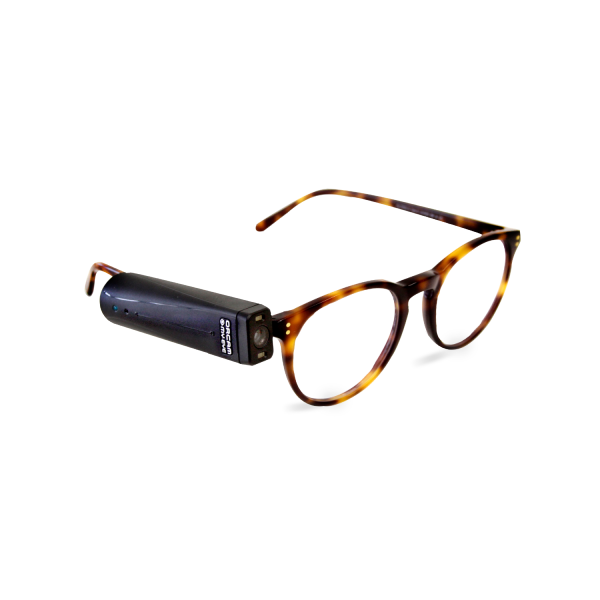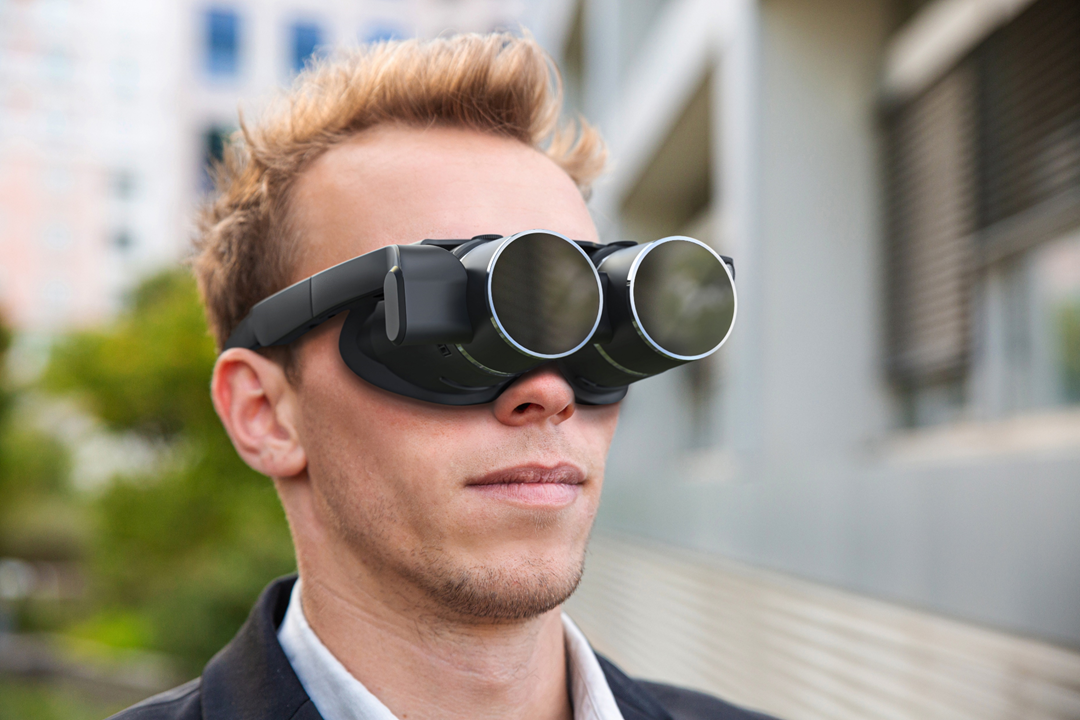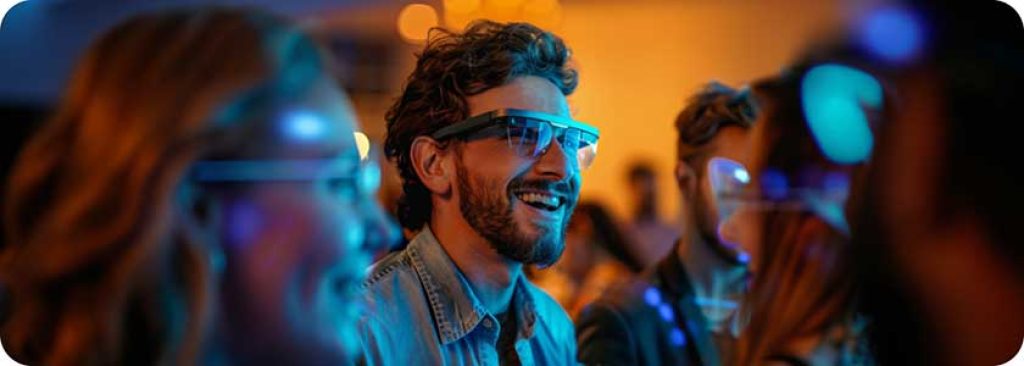AI-Powered Visual Aids: The Next Step in Assistive Technology for the Blind
AI-Powered Visual Aids: The Next Step in Assistive Technology for the Blind
Blog Article
Discover Advanced Assistive Devices for People With Visual Problems
The landscape of assistive innovation for individuals with visual problems is developing quickly, presenting an array of innovative devices that improve autonomy and interaction (Braille displays and notetakers). From wise glasses that seamlessly combine aesthetic input with acoustic advice to innovative navigating applications that redefine spatial recognition, these devices are improving opportunities. The latest innovations in Braille innovation and voice-activated systems considerably contribute to availability. Nonetheless, the ramifications of these advancements expand far beyond mere capability; they test standard assumptions of special needs and self-reliance. What might this suggest for the future of incorporation and support?
Smart Glasses Innovations
Smart glasses represent a considerable improvement in assistive technology for people with aesthetic problems. Outfitted with video cameras and sensors, clever glasses can capture real-time aesthetic information, which is then processed and conveyed to the user via audio comments or haptic sensations.
In addition, developments in expert system have actually further enhanced the abilities of clever glasses. Artificial intelligence formulas can recognize faces, checked out text, and recognize items, making them invaluable devices for daily jobs. Users can receive auditory cues that provide context regarding their atmosphere, fostering freedom and self-confidence.
Furthermore, the ergonomic style and light-weight nature of numerous clever glasses make them suitable for long term usage, making certain convenience while enhancing performance. As these devices remain to progress, they hold the possible to revolutionize the way people with aesthetic impairments experience their every day lives, linking the gap in between ease of access and technology. The ongoing study and development in this area guarantee to increase the possibilities for smart glasses, making them an important element of modern assistive gadgets.
Navigating Apps and Devices
Numerous navigation applications and tools have become necessary resources for people with aesthetic disabilities, substantially boosting their ability to pass through strange environments. These technologies utilize GPS performance, audio hints, and real-time information to give users with exact navigating aid.
One famous example is the Aira app, which connects customers to experienced agents who can offer visual descriptions of surroundings and navigating assistance through an online video feed. This service improves the customer's spatial recognition and self-confidence while navigating. Another significant device is Seeing Eye GPS, which provides voice-guided navigation and sights, making it possible for customers to gain access to important information about their environments.

As modern technology proceeds to advance, the advancement of more advanced navigation tools guarantees to additional encourage people with aesthetic disabilities, assisting in seamless mobility and integration into varied settings. Such advancements contribute in promoting a much more inclusive culture.
Braille Technology Advancements
In recent times, innovations in Braille innovation have actually considerably changed how individuals with aesthetic impairments accessibility information and engage with the globe around them. The growth of portable Braille screens has actually revolutionized reading by permitting users to attach wirelessly to computers, smartphones, and tablets. These gadgets transform message into Braille in real-time, making it possible for seamless interaction with digital material.
Additionally, ingenious Braille printers have actually emerged, boosting the production of tactile materials. Modern embossers are faster and extra efficient, enabling for the fast production of Braille records and educational products. This performance minimizes the moment and cost connected with producing Braille sources, making them extra easily accessible to colleges and companies.
Furthermore, the combination of Braille with various other modern technologies, such as synthetic intelligence and maker discovering, has opened new avenues for individualized discovering experiences. Voice recognition and synthesis innovations can match Braille, supplying a comprehensive approach to information dissemination.
As the need for comprehensive education and learning and work environment environments expands, these technological improvements play a vital role in equipping people with aesthetic problems, ensuring they have equivalent accessibility to info and chances in numerous facets of life.
Wearable Instruments for Self-reliance
A growing range of wearable tools is enhancing independence for people with visual problems, providing ingenious services that improve navigating and day-to-day living. Braille displays and notetakers. These devices make use of sophisticated modern technologies to supply real-time responses and assistance, promoting freedom in different environments

Wearable modern technology additionally consists of smartwatches that can be configured with availability functions, enabling users to get notices, track their locations, or perhaps call for support with the touch of a button. Some devices integrate man-made intelligence to assess the environment, offering audio descriptions of nearby things or individuals.
Voice-Activated Assistive Solutions
Leveraging voice-activated assistive options has actually transformed the landscape of assistance for individuals with visual disabilities, offering hands-free interaction and access to a selection of jobs. These technologies use all-natural language processing and expert system to make it possible for individuals to carry out everyday tasks with easy voice commands.

Additionally, recent innovations in voice acknowledgment accuracy have boosted the individual experience considerably, fitting diverse accents and speech patterns. This inclusivity guarantees that more individuals can gain from these technologies, cultivating a higher sense of autonomy.
Verdict
To conclude, the development of advanced assistive tools substantially improves the freedom and high quality of life for people with visual impairments. Innovations such as smart glasses, navigating applications, Braille technology, wearable gadgets, and voice-activated services jointly foster a more comprehensive atmosphere. These innovations encourage individuals to navigate their surroundings with what is an od doctor confidence and engage more completely with the world, inevitably advertising greater access and equal possibilities for individuals facing aesthetic difficulties.
The landscape of assistive innovation for people with aesthetic problems is advancing rapidly, providing a variety of ingenious devices that enhance autonomy and interaction.Smart glasses represent a substantial improvement in assistive technology for individuals with aesthetic problems. As these tools proceed to develop, they hold the potential to reinvent the means individuals with visual problems experience their daily lives, linking the gap in between ease of access and innovation.In recent years, innovations in Braille technology have actually significantly transformed how people with aesthetic impairments gain access to details and involve with the world around them. These technologies empower users to browse their environments with self-confidence and engage even more fully with the globe, inevitably promoting greater ease of access and equal possibilities for people dealing with visual obstacles.
Report this page